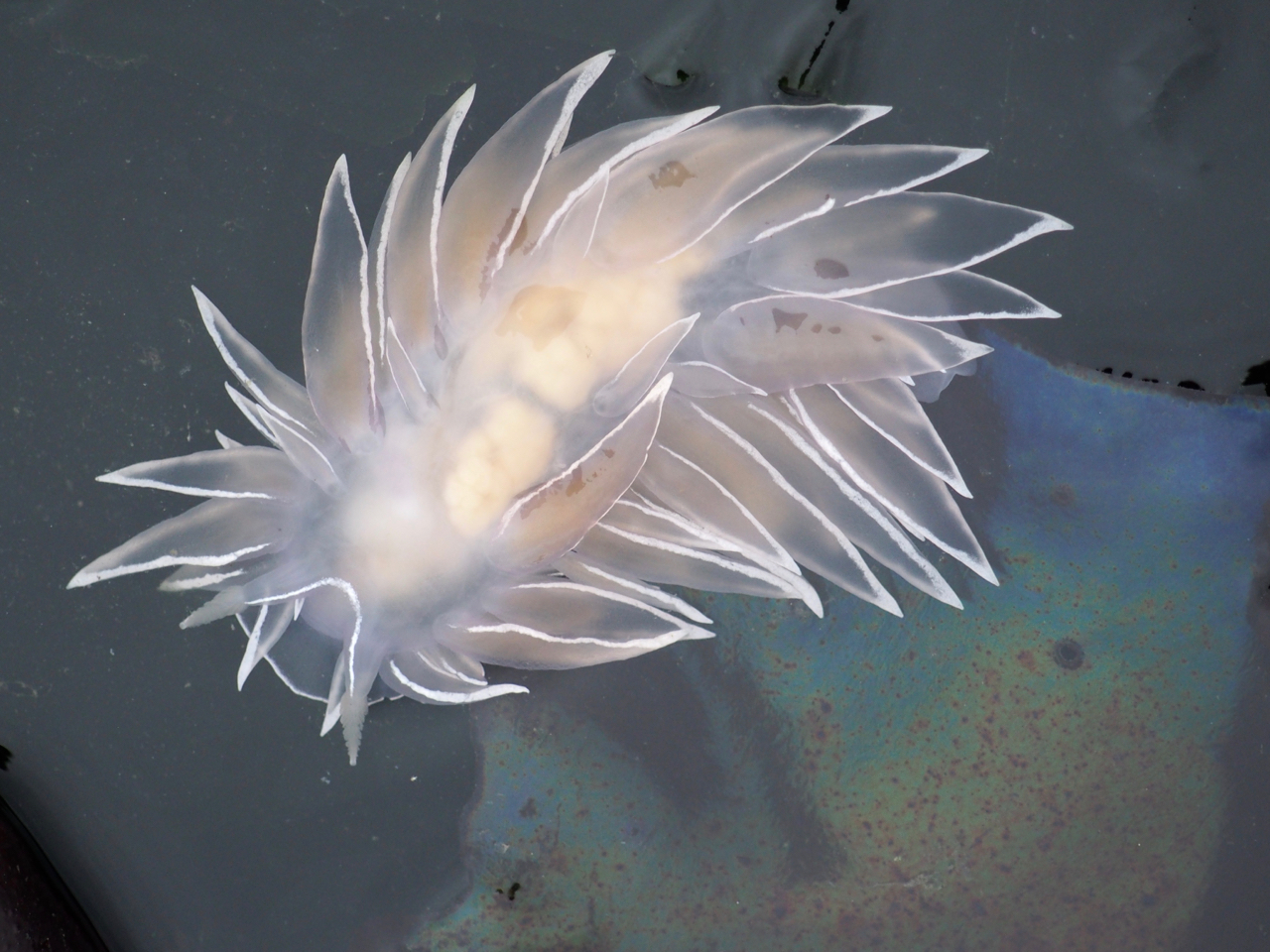To identify what you find, this online guide for local species can be helpful: https://soundwaterstewards.org/ezidweb/
We will enjoy minus tides on these dates: July 1-9; July 17-24; July 29-August 6; August 15-21; and August 26-31. There are huge variations in times of low tide in Puget Sound, so be sure to check a tide table for the beach you plan to visit. This tide table provides 14 days of information. Scroll down to Admiralty Inlet (or elsewhere), choose your location, then scroll down to the bottom to enter the dates.
https://www.saltwatertides.com/dynamic.dir/washingtonsites.html#puget
When exploring tide pools, please follow proper beach etiquette, as explained by the Port Townsend Marine Science Center: Tidepooling Guide
Here are the suggestions from our Guiding Committee:

Hemigrapsus nudus (Purple Shore Crab)
Marcia Schwendiman: Shine Tidelands State Park
Shine Tidelands is located at the west end of the Hood Canal Bridge on Highway 104. Turn north at the junction with Paradise Bay RD then immediately east at the park. This is a fine place to beachcomb, dig clams and oysters (with a permit), launch a kayak, and look for migratory birds. The park entrance is signed and parking is plentiful at the park’s entrance on the shore of Bywater Bay. Two beaches can be explored. To the north, a two-mile round-trip leads to views of a backwater lagoon and ends with a feature called a tombolo which connects the mainland to Hood Head. If the tide is a minus 2 or lower, one can hike south, passing under the Hood Canal Bridge and then stroll along a usually deserted beach littered with glacial erratics, fine habitat for intertidal creatures. Be sure to return to the park before the tide starts coming in or you will not be able to cross back under the Bridge!
Oma Landstra: East Beach on Marrowstone
My low tide recommendation is to go to East Beach on Marrowstone and walk as long as you like along the shore. Opportunities to see seals, shells, sea stars and many interesting sights will unfold for you. This walk allows plenty of room for safe distancing and a relaxed walk. Observe what you see, the identifying characteristics that you see, the descriptions of the animals and their colors. Listen to the sounds.

Henricia (Blood Star)
Michele Olsen: Salt Creek Recreation Area
My location suggestion is Salt Creek Recreation Area. Tongue Point is great fun to explore at low tide and the park itself is free to access with great spots for picnicking as well as trails to explore. It is a one hour and twenty minute drive from PT. This Clallam County park was recently closed, so check to see if it’s open. If not, you can go early, drive past the park entrance, and down the hill you can park on the right-hand side in a small parking lot (with an outhouse) by Crescent Bay, or just above that in one of two overflow parking lots, then take the trail down to the public beach, on the right side of the creek. You can explore the island in front of the beach, and you might want to scramble over rocks to access Tongue Point. http://www.clallam.net/Parks/SaltCreek.html Happy Trails!!

Cucumaria miniata (Red Sea Cucumber)
Lee Merrill: Kinzie Beach at Fort Worden State Park
Kinzie Beach is one of my favorite places for tidal explorations. Things you might find are sponges, anemones and jellies, worms, mollusks, sea slugs, bivalves, crustaceans including crabs, echinoderms, cephalopods, seaweeds, and seagrasses. And there’s more sea-related animals and plants to be found surrounding tide pools, such as marine mammals, shore plants, and shore birds. If you don’t already have a PNW marine life field guide, an excellent resource is available for purchase here: https://shop.orcanetwork.org/product/ez-guide-to-common-intertidal-invertebrates-of-the-salish-sea/
Marcia Schwendiman: Miller Peninsula State Park and Thompson Spit
The state’s newest park has a trail leading to a deserted beach on a shoreline facing Protection Island. Traveling north from PT, the park is located off highway 101. Turn right at Diamond Point Road and travel 1.2 miles then turn left to the parking area. Print a map in advance, or take a photo of the map in the parking lot. Follow the fairly well signed trail to the beach, then turn right on the beach to Thompson Spit, known for birding and flowers. The best description of this 7.7 mile round-trip hike is found in Day Hiking Olympic Peninsula by Craig Romano.

Dirona albolineata (Frosted Nudibranch)
Wendy Feltham: Indian Island
Whenever there’s a minus tide, I head for Indian Island. You have two choices of County Parks. The first is immediately on your right when you cross the bridge to Indian Island. I like to walk down to the water and turn right, walk under the bridge and along the water’s edge to the old wooden tower. Be careful not to step on the thousands of Aggregating Anemones living on the boulders on the beach! Watch for Ochre Stars, Mottled Stars, Plumose Anemones hanging from the tower, and spectacular seaweed. The second County Park is about a quarter mile down the road, toward Marrowstone, on the right. Drive down to the beach and walk out to the end of “the cut,” a pile of rip rap filled with marine critters.Look for Red Rock Crabs, chitons, the large round egg cases of Lewis’s Moon Snail, and unusual marine worms.
Chris Jones: An alternative to looking in tide pools
On a warm summer evening, just after sunset, step outside wherever you are and look for bats doing their amazing sonar-directed chase for their food, flying insects. We have a lot of bats in our area and they are an important part of our natural environment. Darrell Smith’s presentation on mammals in Nature in Your Neighborhood class inspired this.




